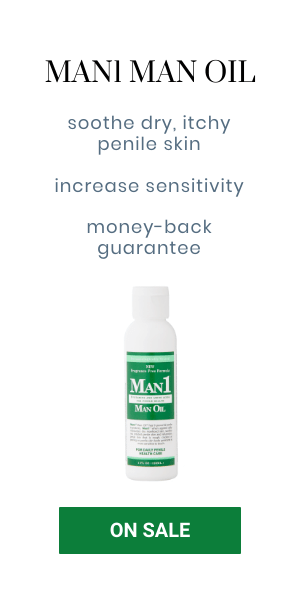Sores are an eye-sore, especially when on the penis. They can happen for many reasons, some of them harmless and some of them even deadly. Whether they are filled with pus or are just bumps with a shooter of pain, they need to be taken care of and quickly. Be sure to treat penis sores with care, and no matter their cause, see a doctor if concerned.
Penis Sore Causes
Here are some of the most commonly cited causes for penis sores. The first five are non-sexually transmitted infections (STIs) and the second five are all STIs.
1) Friction Burn. Rubbing the mister too much and all that friction can cause sores. Avoid wearing any underwear, shorts, or pants that are too-tight and when commencing in amorous activities, be sure to properly lubricate.
2) Folliculitis. This can happen anywhere hair grows! Folliculitis in the genitals is when infected hair follicles create pus-filled penis sores around the hair shaft. It’s nothing to be concerned about and will often clear up on its own. Some men opt to add razor burn serums, like Tend Skin, to the area to quicken the clearing process.
3) Psoriasis. Men who have psoriasis on other parts of their bodies may also develop it on their penis. See a doctor for diagnosis and treatment.
4) Allergic Reactions. Rashes and sores can result from all sorts of allergens and irritants. It can be anything new to him such as laundry detergent or body wash. To clear things up, clean the penis gently with a soft, clean, damp cloth and follow up with a specially formulated crème for the penis.
5) Candida. When there’s too much yeast in the body, it can overgrow causing itching, redness, swelling, chunky white discharge, and white sores on the penis. Usually, treatment involves topical antifungal creams. It’s transmittable, so avoid from sex and let current sexual partners know so they can be on the lookout.
6) Genital Warts. This STI is caused by a viral infection. Warts, which often look like sores, often show up on the glans, the foreskin, shaft, and entire pubic area. They may also have a discharge which will cause itching.
7) Lymphogranuloma Venereum (LGV). A somewhat new sexually transmitted infection (STI), LGV starts as an ulcer that shows 3 – 10 days after infection in the first stage. It can often disappear or go unnoticed until Stage 2 begins in which the lymph nodes in the groin start to swell.
8) Chancroid. It’s a bacterial STI recognized by painful sores on the genitals. It’s only spread through sexual contact. Treatment usually includes drainage and a round (or more) of medications to clear up the infection.
9) Herpes. The herpes simplex virus (HSV) is one of the most common causes of penis sores. Herpes is spread through sexual contact and can cause watery sores which eventually burst and crust over, leading to itching and redness. Those with HSV will require lifetime treatment to control outbreaks as there is currently no cure.
10) Syphilis. Syphilis is another STI caused by bacteria. It leads to symptoms such as fever, skin rash, swollen lymph glands, and hair loss. If caught in the early stages, it can be treated. If left untreated, this disease can lead to blindness, loss of cognition, and even death.
How to Keep Penis Sores from Popping Up
Here are a couple of common-sense ways to avoid penis sores altogether. First, when it comes to sex, take a note out of Salt N Pepa’s playbook and talk about it. Talk to intimate partners about sexual health before having sex. This creates a safe space to talk about any existing issues, past experiences that weren’t so great, or trade the dates each person was tested for STIs and what the results were.
The next step is a little easier — have good hygiene habits. Wash daily (or more if you work out or are intimate) with a gentle cleanser and warm water. Pat dry with a soft towel and ensure the area is completely dry (bacteria loves moisture). Then condition the area with a specially formulated penis health creme (health professionals recommend Man 1 Man Oil, which has been clinically proven safe and mild for skin). Crèmes such as these not only restore and rejuvenate the delicate penile skin but also keep the area fresh and bacteria free. Choose cremes that are built on a natural moisturizing base like Shea butter and vitamin E. Adding vitamins A, B, C, and D for their skin-soothing and cell regeneration properties is also a huge bonus as well.
